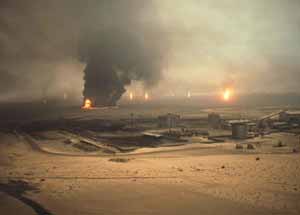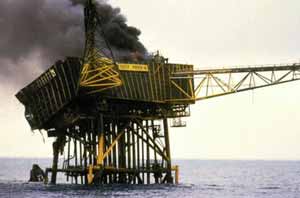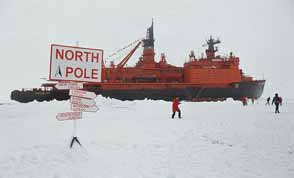An introduction to sustainable energy
Use 'Print preview' to check the number of pages and printer settings.
Print functionality varies between browsers.
Printable page generated Thursday, 25 April 2024, 2:21 PM
An introduction to sustainable energy
Introduction
The search for sustainable energy will dominate the twenty-first century. This course provides an introductory overview of the present energy systems and takes a brief look at where the world may find energy in the future – cleaner use of fossil fuels or renewable energy sources?
This OpenLearn course provides a sample of level 1 study in Environment & Development
Learning outcomes
After studying this course, you should be able to:
understand and be aware of the importance of sustainable energy
demonstrate an overview of the main sources of renewable energy.
1 Why sustainable energy matters
One of the greatest challenges facing humanity during the twenty-first century must surely be that of giving everyone on the planet access to safe, clean and sustainable energy supplies.
Throughout history, the use of energy has been central to the functioning and development of human societies. But during the nineteenth and twentieth centuries, humanity learned how to harness the highly-concentrated forms of energy contained within fossil fuels. These provided the power that drove the industrial revolution, bringing unparalleled increases in affluence and productivity to millions of people throughout the world. As we enter the third millennium, however, there is a growing realisation that the world's energy systems will need to be changed radically if they are to supply our energy needs sustainably on a long-term basis.
This introductory overview aims to survey, in very general terms, the world's present energy systems and their sustainability problems, together with some of the possible solutions to those problems and how these might emerge in practice during the twenty-first century.
The world's current energy systems have been built around the many advantages of fossil fuels, and we now depend overwhelmingly upon them. Concerns that supplies will 'run out' in the short-to-medium term have probably been exaggerated, thanks to the continued discovery of new reserves and the application of increasingly-advanced exploration technologies. Nevertheless it remains the case that fossil fuel reserves are ultimately finite. In the long term they will eventually become depleted and substitutes will have to be found.
Moreover, fossil fuels have been concentrated by natural processes in relatively few countries. Two-thirds of the world's proven oil reserves, for example, are located in the Middle East and North Africa. This concentration of scarce resources has already led to major world crises and conflicts, such as the 1970s 'oil crisis' and the Gulf War in the 1990s. It has the potential to create similar, or even more severe, problems in the future.

Substantial rises in the price of oil also can cause world-wide economic disruption and lead to widespread protests, as seen in the USA and Europe in 2000.

The exploitation of fossil fuel resources entails significant health hazards. These can occur in the course of their extraction from the earth, for example in coal mining accidents or fires on oil or gas drilling rigs.

They can also occur during distribution, for example in oil spillages from tankers that pollute beaches and kill wildlife; or on combustion, which generates atmospheric pollutants such as sulphur dioxide and oxides of nitrogen that are detrimental to the environment and to health.

Fossil fuel combustion also generates very large quantities of carbon dioxide (CO2), the most important anthropogenic (human-induced) greenhouse gas. The majority of the world's scientists now believe that anthropogenic greenhouse gas emissions are causing the earth's temperature to increase at a rate unprecedented since the ending of the last ice age. This is very likely to cause significant changes in the world's climate system, leading to disruption of agriculture and ecosystems, to sea level rises that could overwhelm some low-lying countries, and to accelerated melting of glaciers and polar ice.


Nuclear power has grown in importance since its inception just after World War II and now supplies some 7 per cent of world primary energy. A major advantage of nuclear power plants, in contrast with fossil fuelled plants, is that they do not emit greenhouse gases. Also, supplies of uranium, the principal nuclear fuel, are sufficient for many decades – and possibly centuries – of supply at current use rates. However the use of nuclear energy, as we shall see, gives rise to problems arising from the routine emissions of radioactive substances, difficulties of radioactive waste disposal, and dangers from the proliferation of nuclear weapons material. To these must be added the possibility of major nuclear accidents which, though highly unlikely, could be catastrophic in their effects. Although some of these problems may be amenable to solution in the longer-term, such solutions have not yet been fully developed.
Extracting energy from fossil or nuclear fuels, in the course of providing energy-related services to society, generates significant environmental and social impacts. These impacts are greater than they need be because of the low efficiency of our current systems for delivering energy, converting it into forms appropriate for specific tasks, and utilizing it in our homes, machinery, appliances and vehicles. An important way of mitigating the environmental impacts of current fuel use is therefore to improve the efficiency of these systems. Over the past few decades, significant efficiency improvements have indeed been made, but further major improvements are feasible technologically – and are, in many cases, attractive economically.
Of course, not all energy sources are of fossil or nuclear origin. The renewable energy sources, principally solar energy and its derivatives in the form of bioenergy, hydroelectricity, wind and wave power, are increasingly considered likely to play an important role in the sustainable energy systems of the future. The 'renewables' are based on energy flows that are replenished by natural processes, and so do not become depleted with use as do fossil or nuclear fuels – although there may be other constraints on their use. The environmental impacts of renewable energy sources vary, but they are generally much lower than those of conventional fuels. However, the current costs of renewable energy sources are in many cases higher than those of conventional sources, and this has until recently retarded their deployment.
All these considerations suggest that in creating a sustainable energy future for humanity during the coming decades, it will be necessary:
to implement greatly-improved technologies for harnessing the fossil and nuclear fuels, to ensure that their use, if continued, creates much lower environmental and social impact;
to develop and deploy the renewable energy sources on a much wider scale; and
to make major improvements in the efficiency of energy conversion, distribution and use.
These three general approaches will be explored further, and in greater detail in the remaining sections of this course.
2 Definitions: energy, sustainability and the future
What do we mean by energy and sustainability, and what is meant by future?
The term energy has a long history but the standard scientific definition today is that energy is the capacity to do work. The term power is related to energy and its definition is power is the rate of doing work. The two are linked together by the simple formula
energy = power x time
The term sustainability is not so simple to define but there is perhaps no better definition than that given in the United Nations report 'Our Common Future' produced by the Brundtland Commission in 1987. The Commission defined sustainable development, as 'development that meets the needs of the present without compromising the ability of future generations to meet their own needs ' (United Nations, 1987). This means that sustainable resources are those not significantly depleted over time, those which do not result in substantial pollution or other environmerntal hazards, and those that do not involve the perpetuation of health hazards or social injustice.
The Brundtland Commission's view that developments should not compromise the needs of future generations, suggest that we should judge the sustainability of energy systems on an indefinite time scale – far into the very distant future. This might be thought to be unrealistic when applied to the distant future. Future generations will be justified in blaming us for creating problems that were foreseeable, but they can hardly hold us responsible for eventualities that none of us could have anticipated.
3 Present energy sources and sustainability
What are the principal energy sources at present, and how sustainable are they?
About 80 per cent of the world's energy is currently supplied by fossil fuels such as coal, oil and gas. Present estimates suggest that, at current consumption rates, there are over 200-years' worth of coal left, 60-years' of gas, and 40-years' of oil. Fossil fuels are hydrocarbons, and their combustion releases carbon dioxide into the atmosphere, one of the main causes of the human-induced greenhouse effect.
Nuclear energy is a fairly new technology which currently provides nearly 7 per cent of our primary energy requirements. It is based on harnessing the very large quantities of energy that are released when the nuclei of certain atoms, such as uranium-235, are induced to split or fission. Estimates suggest that there is sufficient fuel for many decades or even centuries, depending on use rates, but there are major concerns regarding safety and the disposal of nuclear waste products.
The combustion of biofuels such as wood or other biomass material gives us bioenergy. To be sustainable, the forests that provide traditional wood fuel need to be re-planted at the same rate as they are cut down. The incomplete combustion of wood can also release a mixture of greenhouse gases with a greater overall global warming effect than can be offset by the CO2 absorbed by growing replacement trees. Modern bioenergy power plants burn straw and forestry wastes.
Hydroelectricity is the power from flowing water, a source which has been used by humanity for many centuries. In 2000, it contributed over 17 per cent of world electricity. Its original source is the sun; water evaporated from oceans falls as rain or snow into rivers, where its flow can be harnessed using water wheels or turbines. Larger installations can have adverse environmental effects, but smaller projects may have little, if any, impact
4 Renewable energy sources
Fossil and nuclear fuels are often described as non-renewable because supplies are finite and will eventually run out. Renewable fuels are those energy sources that will not run out in the future.
Most renewable energy sources originate from the sun (solar energy), while tidal energy originates from the gravitational pull of the moon, and geothermal energy results from heat trapped below the surface of our planet.
Solar energy can be used directly in a two different ways. The heating part of the suns rays can be used to directly produce hot water (solar thermal), while the light energy can directly produce electricity from photovoltaic cells (PV).
There are, however, a number of indirect ways in which solar energy can be utilised:
Wind energy has been utilised for mills and pumps for hundreds of years, but has been harnessed to produce electricity during the past several decades. Wind 'farms' have been set up in the UK, and around the world, both inland and offshore.
Wave energy technology is still in the early development phase but several devices have been tested in pilot projects. The most widely used is the oscillating water column which uses waves to push air through a turbine which generates electricity.
Tidal energy is utilised by allowing the tide to build up a head of water behind a barrier, then allowing the water to flow through a turbine to produce electricity. The effectiveness depends on the position of the moon, being greatest at full and new moons. Tidal currents can also be used to generate power, by installing turbines in the flows, and that is seen as a more likely way ahead than building large invasive barrages.
Geothermal energy is energy taken from hot regions below the surface. The available heat varies from place to place.
All of these renewable resources hold out a great promise for the future. At present, they are more expensive than fossil fuels but their sustainability and lesser environmental impacts make them attractive alternatives to fossil fuels.
5 Energy services and efficiency improvement
Energy efficiency measures can also play a part in reducing energy demand and greenhouse gases. At present, only about one-third of the energy content of the fuel we use emerges as 'useful' energy, the remaining two-thirds ends up as waste heat. The present regulatory regime compounds this problem by rewarding utilities for selling as much energy as possible regardless of energy efficiency or longevity of appliances.
One reason for the continuing inefficiency is that energy has been reducing in price over the past century, so there is little incentive to reduce costs by increasing efficiency.
On the supply-side there is a large potential for improving the efficiency of electricity generation by the application of new technologies. One example is the combined cycle gas turbine (CCGT) which uses the hot exhaust gases from a gas turbine generator to power a steam generator which then produces additional electricity. This results in efficiencies of 50 per cent or more.
Another example is the use of waste heat from power stations to directly heat buildings. This process, called combined heat and power (CHP), is widely in use in Denmark where around 72 per cent of electricity was produced this way in 2000.
Losses of around 8 per cent can also occur after electricity production through the transmission and distribution systems that convey electricity to customers.
There is also a large potential to increase the efficiency of energy use on the demand-side, The technological approach is to improve the efficiencies of the appliances we use so that we use less energy to achieve the same service levels. The social approach involves rearranging our lifestyles so that we use less energy, e.g. by walking or cycling instead of driving to work.
Government statistics break down energy use into four main sectors:
the domestic sector consisting of households requiring energy for heating, lighting, hot water, cooking and electrical appliances;
the commercial and institutional sector consisting of offices, shops, schools, hospitals etc. which have similar energy requirements to households;
the industrial sector has similar demands to the previous two sectors but in addition needs energy to power specialised industrial processes such as steel making; and
the transport sector mainly uses energy to power vehicles.
It is possible to improve efficiency in buildings by insulating against loss of heat. Other measures include, draught proofing and heat recovery systems, and energy efficient appliances. The industrial sector can improve energy efficiency by re-using waste heat from one industrial process for another.
Another way to reduce energy usage is to reduce the material used in products. For example, it is possible to use thinner metal in products as diverse as car bodies and drinks cans.
6 Energy in a sustainable future
How can we improve the sustainability of human energy use in the future?
In the past 50 years the changes in patterns of energy production and consumption have been radical. If we are to improve the sustainability of our energy systems, equally profound changes might well be necessary over the next 50 to 100 years.
New, 'clean' technologies could help to mitigate some of the adverse consequences of fossil and nuclear fuels by improving the efficiency of systems and reducing pollution. This approach includes carbon sequestration – storing the carbon generated by the combustion of fossil fuels so that it cannot find its way back into the atmosphere. Fuel switching to use less-polluting fuels is another option, as is switching to renewable energy sources such as tidal or wind power, whose environmental impacts are usually less severe than those of fossil or nuclear sources. At the demand-side of the energy chain, we could develop options to employ the energy we have more efficiently.
The Royal Commission on Environmental Pollution (RCEP) has come up with four scenarios for the UK which consider the options available for balancing supply with demand given the need, as suggested by various reports, to reduce CO2 emissions by 60 per cent. The scenarios focus on the reduction of demand and the use of renewables, perhaps in conjunction with cleaned-up fossil or nuclear plants.
Likewise, there have been numerous studies from a world perspective. The World Energy Council has come up with six scenarios incorporating different assumptions about rates of economic growth in rich and poor countries; choices of technology and its development; and the priority given to ecological issues. The overall message is that there is a number of paths to sustainability, but, since they rely on different mixes of technology, they are likely to have different social, environmental and political implications.
Conclusion
This free course provided an introduction to studying Environment & Development. It took you through a series of exercises designed to develop your approach to study and learning at a distance, and helped to improve your confidence as an independent learner.
Acknowledgements
Cover image: reynermedia in Flickr made available under Creative Commons Attribution-NonCommercial-ShareAlike 2.0 Licence.
The material acknowledged below is Proprietary, used under licence and not subject to Creative Commons licensing (see terms and conditions). Grateful acknowledgement is made to the following:
Figure 2 © Ian Hodgson/Reuters/Popperfoto
Figure 3 © PA Photos
Figure 4 © Accent Alaska
Figure 5 © Tony Bennets/Lonely Planet Images
Figure 6 © Bryan & Cherry Alexander Photography
Don't miss out:
If reading this text has inspired you to learn more, you may be interested in joining the millions of people who discover our free learning resources and qualifications by visiting The Open University - www.open.edu/ openlearn/ free-courses
Copyright © 2016 The Open University